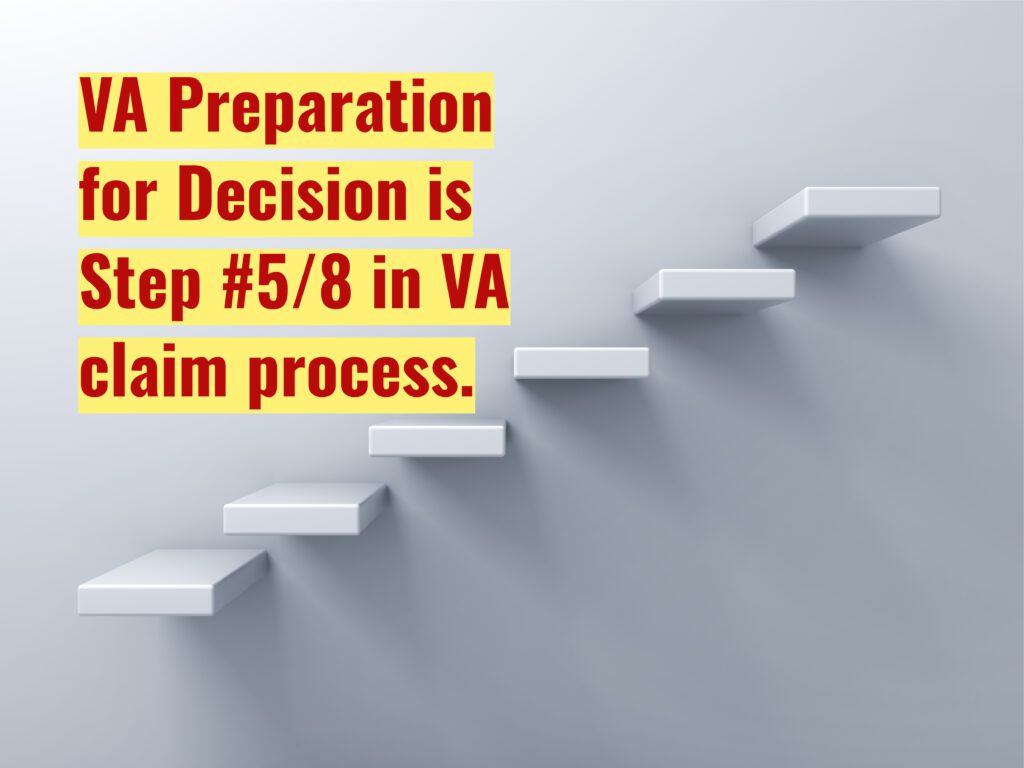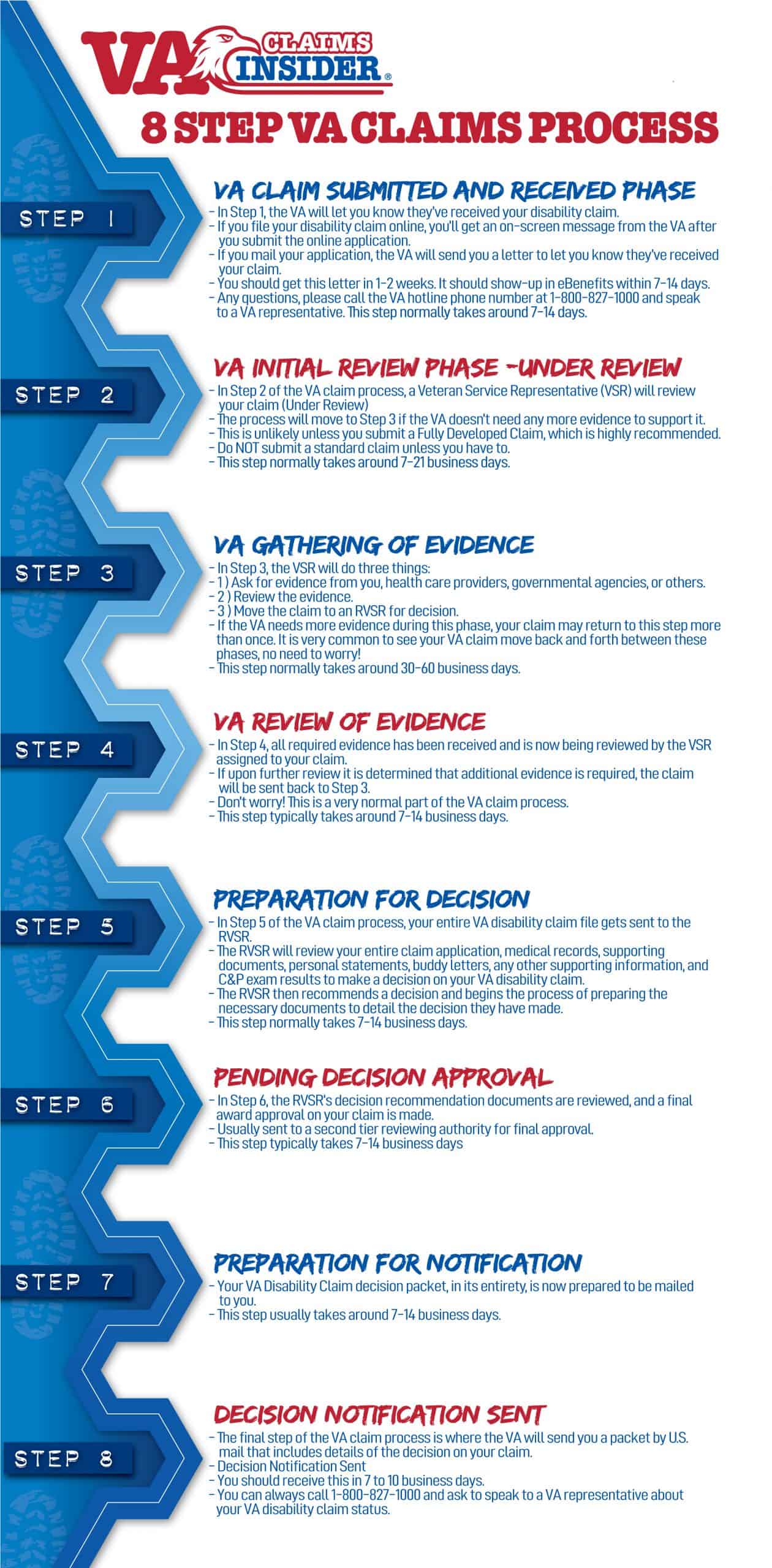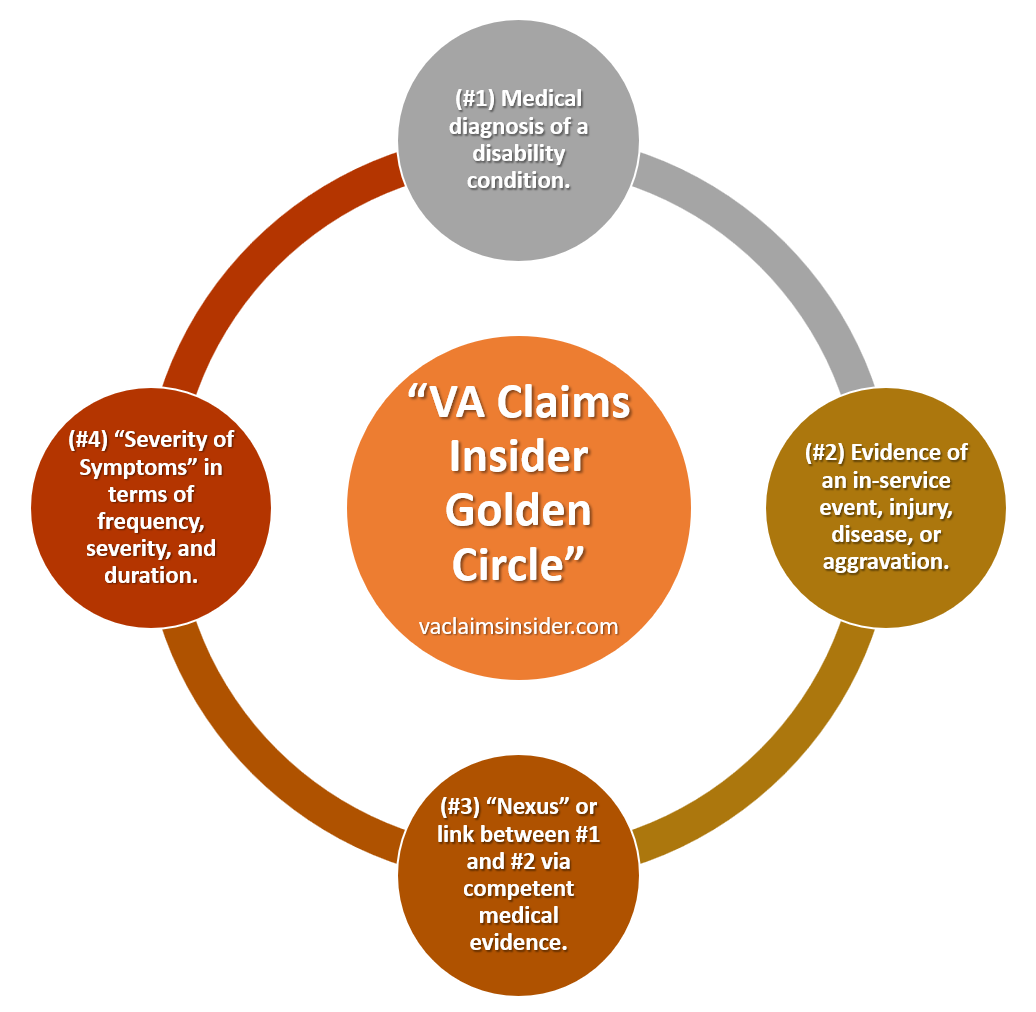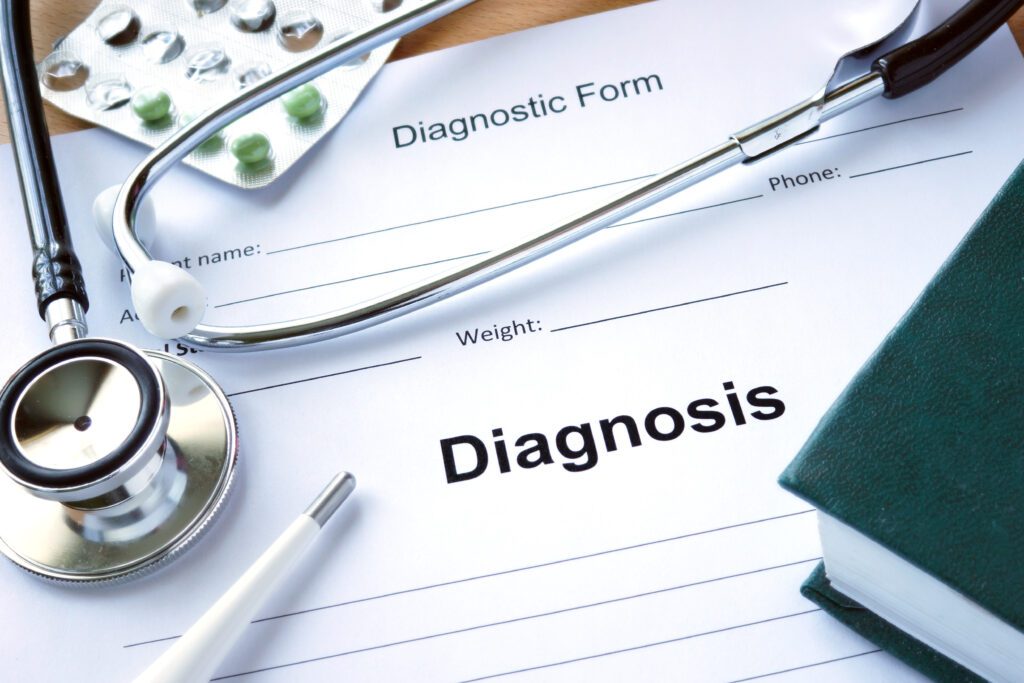Looking for Expert-Level VA Claim Answers?📱Call Us Now! 737-295-2226
In today’s post, we’ll answer the question: “Is preparation for decision a good sign?”
The short answer is, it depends.
Why?
Because at the Preparation for Decision stage you still don’t know whether your VA claim will be approved or denied.
A final VA rating decision isn’t officially made until you see “Decision Notification Sent,” which is the final step of the 8-step VA claim process.
Normally, the VA Rater, known as a Rating Veteran Service Representative (RVSR), follows an 8-step process to review and rate your claim and the “Preparation for Decision” phase is only step #5 of 8.
Okay, let’s explore this question in more detail, along with the evidence requirements to get your VA claim approved.
You might also like the following blog posts:
- Is Preparation for Notification a Good Sign?
- The 8-Step VA Disability Claim Process Explained
- How to Increase Your VA Rating and Have It Approved Faster
- Top 10 Easiest Things to Claim for VA Disability This Year
Table of Contents
VA Claim Prep for Decision: Is Preparation for Decision a Good Sign?

Yes, Preparation for Decision is a good sign!
This means your VA claim is progressing and nearing the final stages of a VA rating decision: approval, denial, or deferral.
Generally, you can expect to receive a VA rating decision within 30 business days of the Preparation for Decision phase.
The “VA Claim Prep for Decision” phase is step #5 of 8 of the VA disability claim process.
The three remaining steps are:
- Pending Decision Approval (average of 7-14 days)
- Preparation for Notification (average of 7-14 days)
- Decision Notification Sent (average of 7-10 days)
In total, if you filed a Fully Developed Claim (FDC), you should get a rating decision in 90-120 calendar days.
Preparation for Decision VA: What Does Preparation for Decision Mean in a VA Claim?

VA Preparation for Decision is Step #5 of the 8-step VA claim process.
In this step, your entire VA disability claim file (VA C File) gets sent to the VA Rater (RVSR).
The RVSR will review your entire claim application, medical records, personnel records, statements in support of a claim, buddy letters, pictures, any other supporting information, and C&P exam results to make a final decision on your VA disability claim.
The RVSR then recommends a decision and begins the process of preparing the necessary documents to detail the decision he/she has made.
Sometimes a “Supervisory RVSR” will review the claim decision before it goes final.
The Preparation for Decision step usually takes 7-14 days.
VA Rating Decision Review: What is Decision Notification Sent?

The last step in the VA rating process is called “Decision Notification Sent.”
This means the VA Rater (RVSR) has made a claim decision and has mailed you a packet explaining their rationale.
If you don’t want to wait 7-10 business days for the rating decision letter, simply login to your VA.gov account and see if your VA rating has changed.
VA.gov is updated with your new VA rating(s) in 24-48 hours of Decision Notification Sent.
What is the 8-Step VA Disability Claim Process?

Generally, the Veteran Service Representative (VSR) and Rating Veteran Service Representative (RVSR) who review and rate your claim follow an 8-step process:
- STEP #1: Claim Received: Normally takes between 7 and 14 days
- STEP #2: Under Review: This step typically takes 7 to 21 days
- STEP #3: Gathering of Evidence: This step is the longest phase in the VA claim process and usually takes 30-60 days
- STEP #4: Review of Evidence: Takes 7 to 14 days on average
- STEP #5: Preparation for Decision: This step typically takes 7-14 days to complete
- STEP #6: Pending Decision Approval: 7 to 14 days
- STEP #7: Preparation for Notification: 7 to 14 days
- STEP #8: Decision Notification Sent: The final step in the VA disability claim process takes 7-10 days
What is the VA Claims Insider Golden Circle?

The “VA Claims Insider Golden Circle” represents the 4 foundational pillars needed to get your VA claim approved.
- #1. Diagnosis of a current disability in a medical record. If yes, go to #2.
- #2. Evidence of an in-service event, injury, disease, or aggravation. If yes, go to #3.
- #3. “Nexus” meaning link or connection between #1 and #2 above via competent medical evidence. If yes, go to #4.
- #4. Severity of symptoms in terms of frequency, severity, and duration. This is the final step in “The Caluza Triangle” and it’s what determines your final VA rating percentage for the disability.
VA Claim Approved: What Evidence Should I Submit with My VA Claim?

To get your VA claim approved, you need to prove three essential elements before the VA:
- #1. Medical diagnosis of a disability condition (this can be in Service Treatment Records (STRs), VA medical records, OR any private records, but it needs to be in a medical record somewhere). It does help to have a “current” medical diagnosis within the past 12 months, although it’s not required.
- #2. Your disability condition was caused or made worse by your ACTIVE-DUTY military service (“Nexus”) OR it’s proximately due to or aggravated by ANOTHER service-connected disability rated at 0% or higher for secondary service connection.
- #3. Current symptoms of the disability condition, which we call “Severity of Symptoms.” How severe are your symptoms and how is your disability condition negatively impacting your work, life, and social functioning?
#1. Medical Diagnosis in a Medical Record

First, you MUST have a medical diagnosis of a disability condition in a medical record.
The medical diagnosis does NOT need to be in your Service Treatment Records (STRs), but it must be somewhere, either in VA medical records or private treatment records.
If you think you have a disability condition, but don’t yet have it medical diagnosed, GET YOUR BUTT TO THE DOCTOR!
Without a medical diagnosis, you’re dead-in-the-water, and your VA disability claim will get denied.
Pro Tip: The #1 best way to prove you have a medical diagnosis of a disability is to upload medical records (this can be in Service Treatment Records, VA medical records, or private treatment records) showing a current medical diagnosis in support of your VA Fully Developed Claim.
#2. Nexus for Service Connection

Second, you must be able to prove to the VA that your disability condition (if medically diagnosed) was caused or made worse by your active-duty military service (this is the “Nexus,” which means link or connection) OR it’s proximately due to or aggravated by ANOTHER service-connected disability rated at 0% or higher for secondary service connection.
If you’ve ever logged into your VA.gov account, clicked the “MyVA” tab on the top right-hand side of the screen, and then clicked your VA rating percentage, and seen various disability conditions that say, “Service Connected Disability? NO” the VA denied service connection.
The VA is telling you they couldn’t find a “Nexus” for service-connection on at “at least as likely as not” basis, which is a required element by law to be eligible for VA disability benefits.
But guess what veterans?
The VA makes mistakes every day, all day.
Literally, you could have been denied VA benefits in error.
Don’t quit!
You can still turn-around and file an appeal using the VA Higher Level Review or a Supplemental Claim process.
While it’s true that the VA is trying to help you (they don’t intentionally deny claims), you’ve got to help them, too!
Make it easy for the C&P Examiner and VA Rater to see the Nexus for service connection.
Pro Tip: The #1 best way to prove service connection to the VA is to get an Independent Medical Opinion, also known as a Nexus Letter from a private healthcare provider.
#3. Severity of Symptoms (Frequency, Severity, and Duration)

Third, your final VA rating percentage for a particular disability comes down to your “Severity of Symptoms” in terms of Frequency, Severity, and Duration.
Generally, the more severe your symptoms, the higher the VA rating percentage you’ll receive for that disability.
You can see what I mean by paying close attention to the symptoms and keywords tied to various VA disability rating percentages in 38 CFR, Part 4, Schedule for Rating Disabilities.
When writing your personal statements and buddy letters, you want to explain in plain English your current symptoms of the disability condition into the present day, aka, “Severity of Symptoms.”
Specifically, you need to talk about how your disability condition is negatively limiting or affecting your work, life, and social functioning.
Pro Tip: The #1 best way to prove your current severity of symptoms is to write a personal statement in support of your claim and don’t hold anything back – you’ve got to tell the VA how you are on your very worst days. Medical evidence, with symptoms clearly documented, along with Buddy Letters are extremely helpful, too.
About the Author

Brian Reese
Brian Reese is a world-renowned VA disability benefits expert and the #1 bestselling author of VA Claim Secrets and You Deserve It. Motivated by his own frustration with the VA claim process, Brian founded VA Claims Insider to help disabled veterans secure their VA disability compensation faster, regardless of their past struggles with the VA. Since 2013, he has positively impacted the lives of over 10 million military, veterans, and their families.
A former active-duty Air Force officer, Brian has extensive experience leading diverse teams in challenging international environments, including a combat tour in Afghanistan in 2011 supporting Operation ENDURING FREEDOM.
Brian is a Distinguished Graduate of Management from the United States Air Force Academy and earned his MBA from Oklahoma State University’s Spears School of Business, where he was a National Honor Scholar, ranking in the top 1% of his class.



